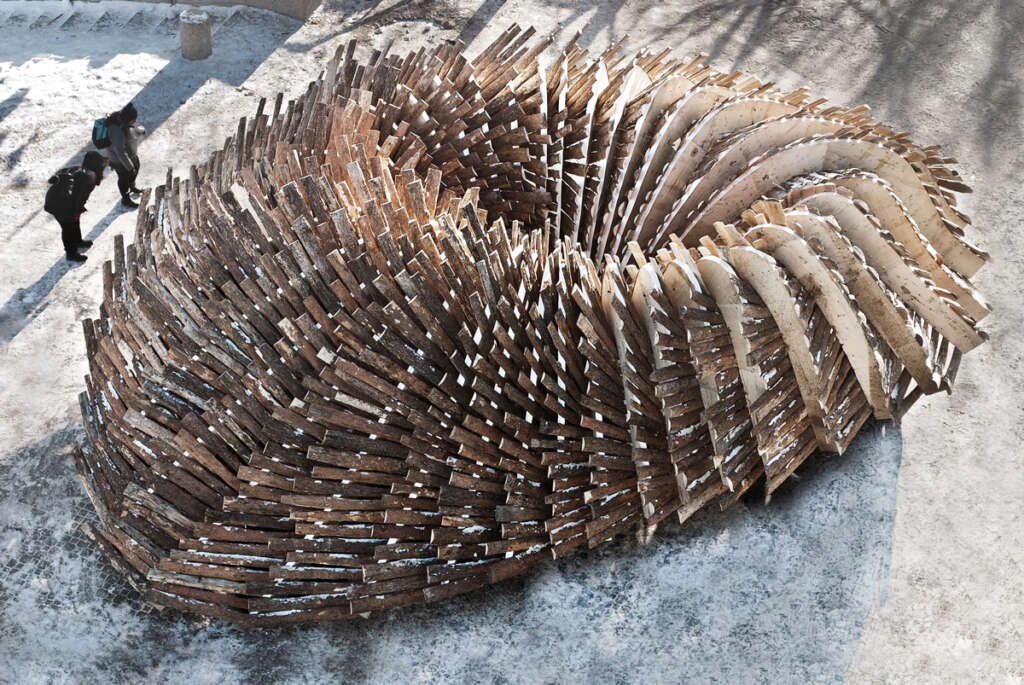
The following description is courtesy of Dalhousie Architectural Press. Dalhousie Architectural Press has published a ten-year comprehensive survey of the international Warming Huts competition, complete with graphic analysis and critical writing.
A decade of art and life
Warming Huts: a decade + of art and architecture on ice provides a colourful and detailed look at the Warming Huts, the annual mid-winter installation of art and architecture on the frozen rivers of Winnipeg, Canada.
The project has drawn contributors from around the world since its inauguration in 2010, when there were just five “huts” – each a collaboration between an architect and an artist. In 2011, the project was expanded into an international design competition; three winning huts are added annually, so that today more than 30 huts are set up each year. Their presence has boosted healthy, active wintertime use of the icy rivers for pleasure – and well-being.
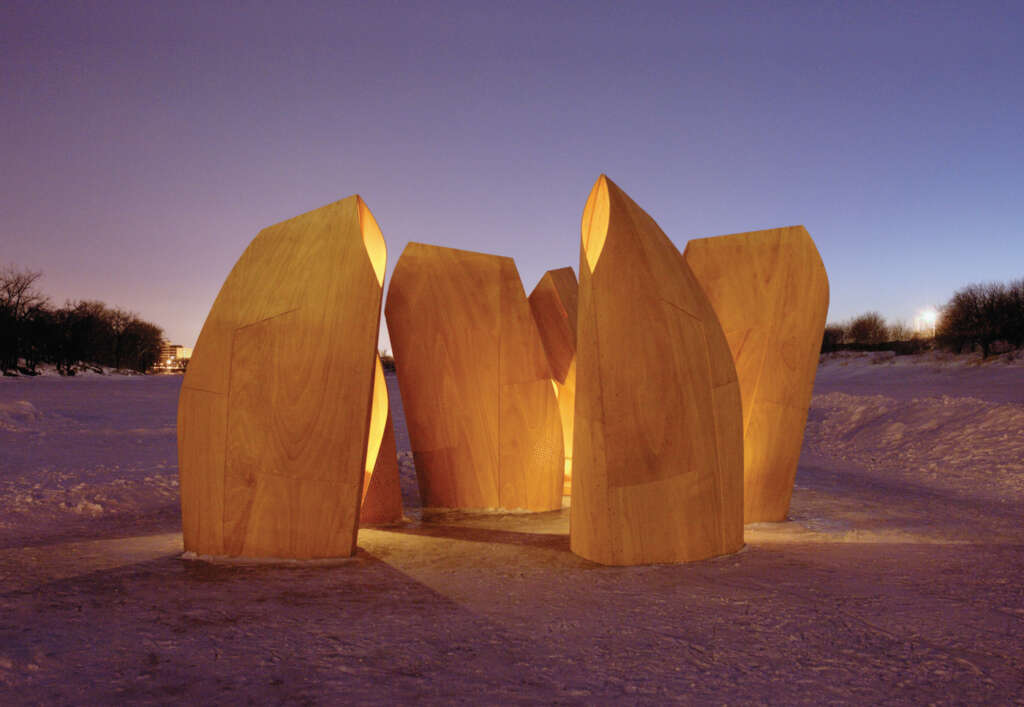
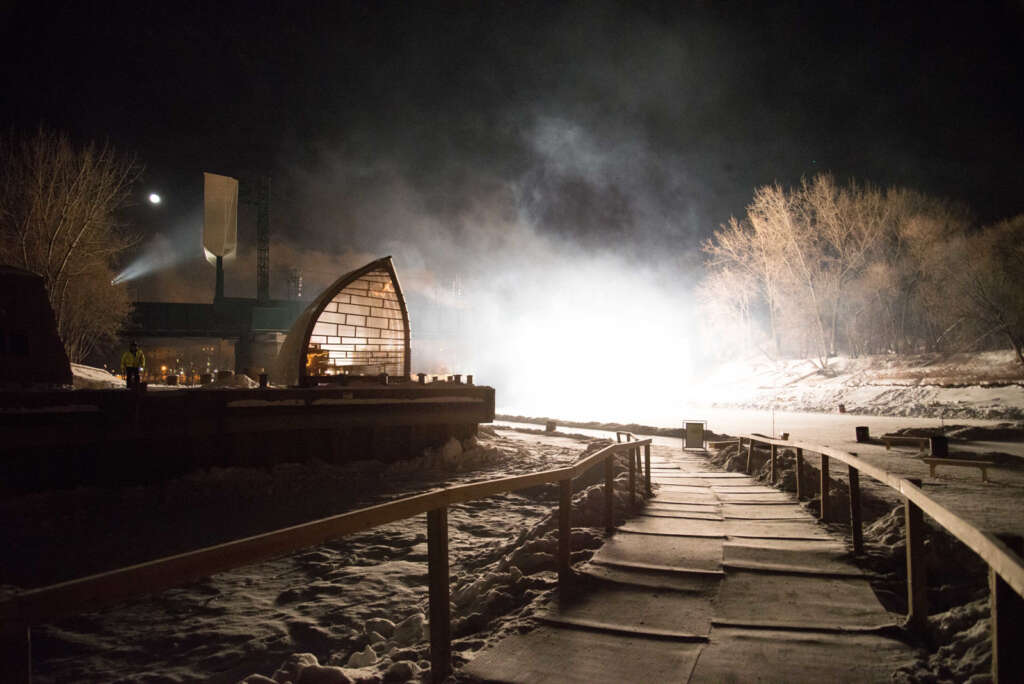
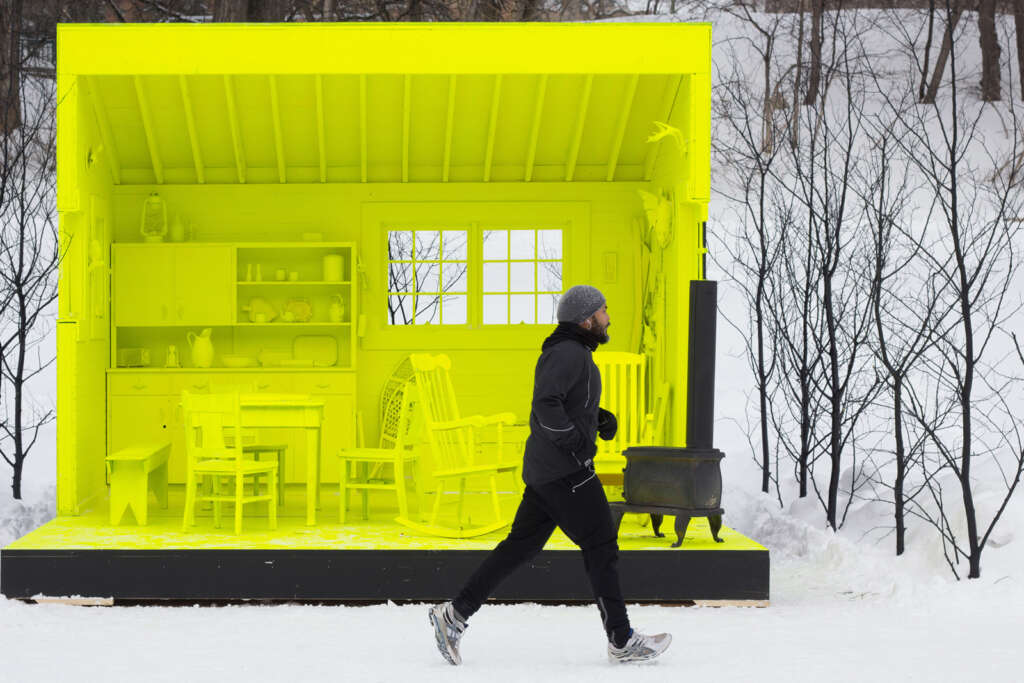
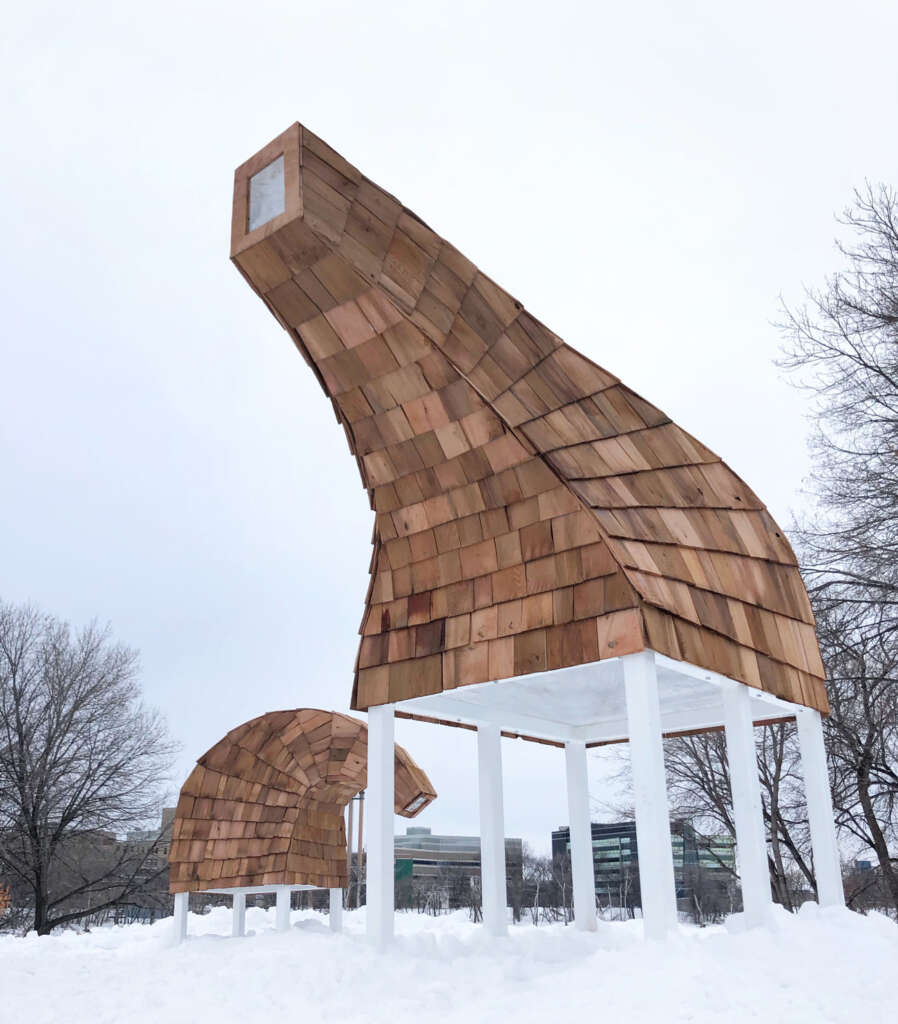
The book includes every hut ever built. Besides competition winners, the project includes the work of invited visual artists like Patkau Architects, Frank Gehry Associates, Rojkind Arquitectos, Luca Roncoroni, and Anish Kapoor. It also includes huts and ice stages built with artists from other fields, including Inuk throat-singer, Tanya Tagaq, film-maker, Guy Maddin, Norwegian ice musician, Terje Isungset, and Canadian band, Royal Canoe. Huts by students from the Faculty of Architecture at the University of Manitoba (FAUM) and local high schools are also included in the book, as are the guerilla, or “rogue” huts, which snuck their way into the exhibition over the years.
All of these structures are documented in the book in large, vivid photographs, texts, and process images – sketches, models, and photographs of construction. In all, there are close to 800 images across the 140 full-colour pages of this large-format book. Double-page maps show where the competition entries and built huts came from, and provide an analysis of entries by place of origin and timelines. Thirty pages of images document the “taxonomies,” an archive of five hundred of the competition entries organized thematically and formally.
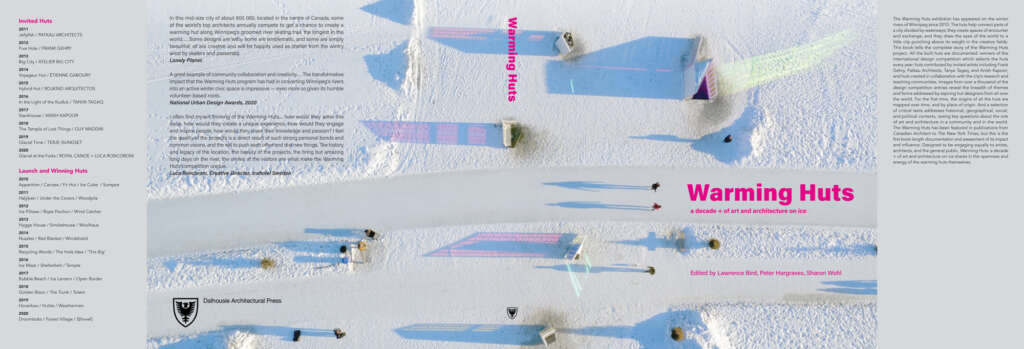
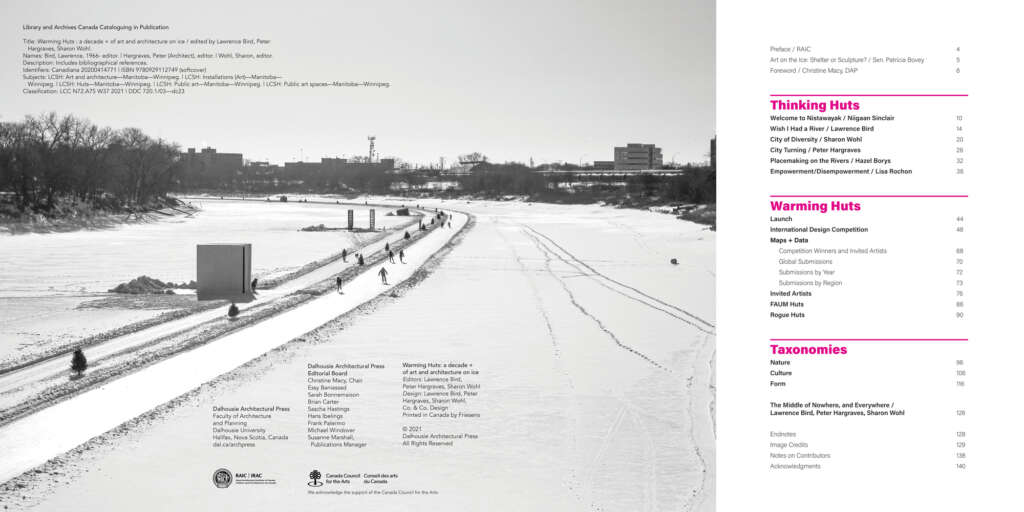
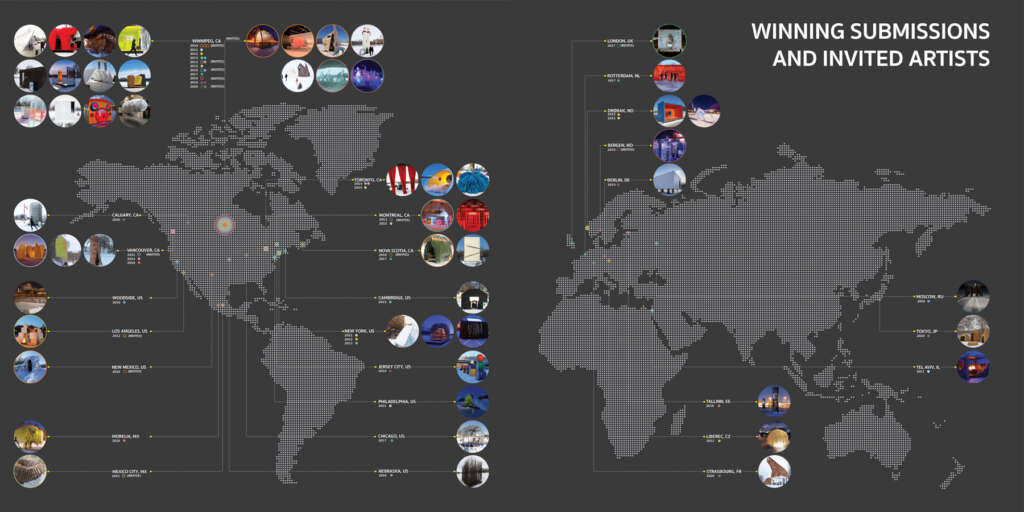
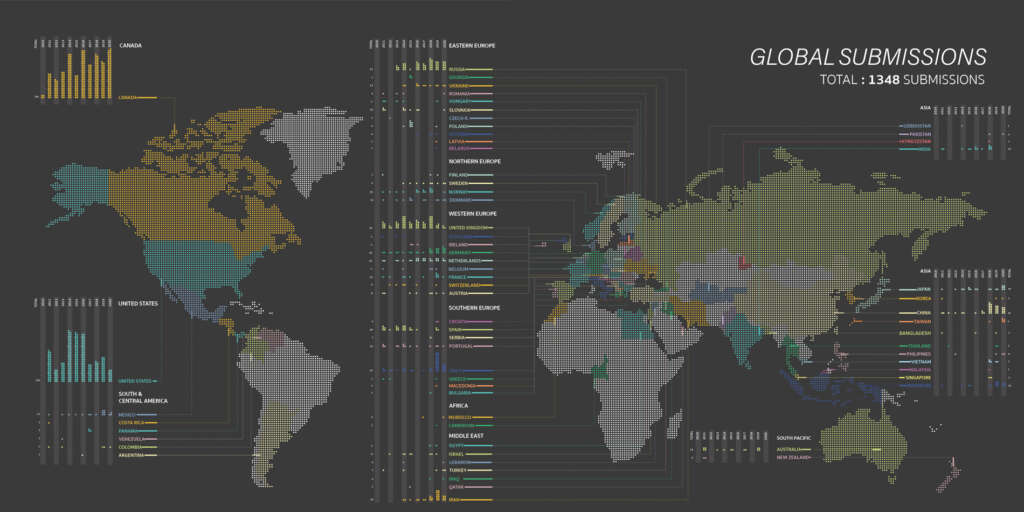
Reflection and recognition
The visual material is introduced through six chapters of critical writing, examining the huts from a variety of viewpoints – from their social significance, to their rightful place in Winnipeg’s history, and in the landscape of international public art. Together with the many illustrations drawn from current events and historical research, these texts discuss the project as a critical body of work, while celebrating its contribution to the city and its international standing. The book foregrounds the poetics and politics of public space, and highlights the variety of architectural narratives expressed in the huts.
The publication of Warming Huts closely follows on the heels of a National Urban Design Award for Community Initiatives, won by the creators of the annual event: Sputnik Architecture Inc. and The Forks Renewal Corporation: “A great example of community collaboration and creativity… The transformative impact that the Warming Huts program has had in converting Winnipeg’s rivers into an active winter civic space is impressive – even more so given its humble volunteer-based roots… The program’s scope is ambitious—giving Winnipeg significant international exposure.”
(2020 National Urban Design Award Jury comments)
As the project enters its second decade, this book is a timely recognition of how far it has come – and how far it promises to go.
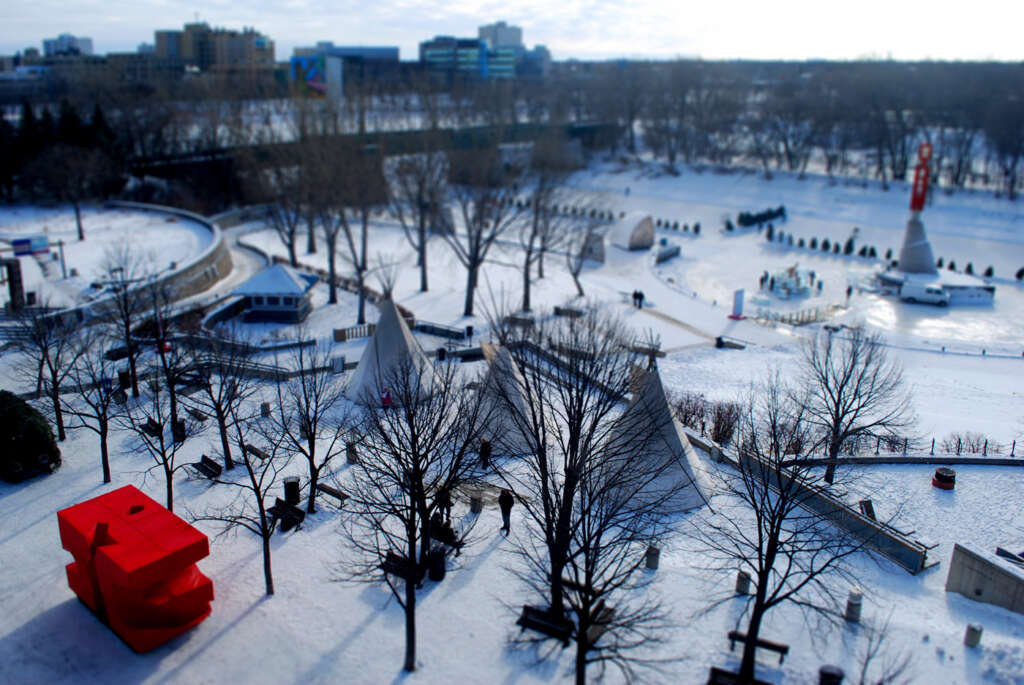

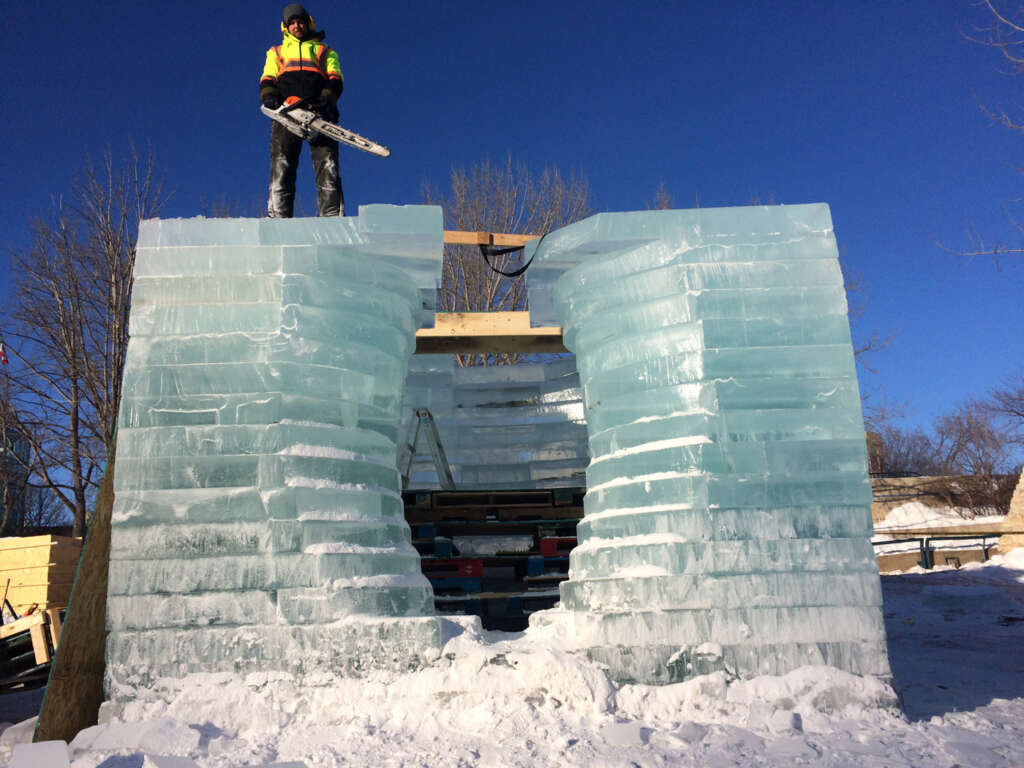
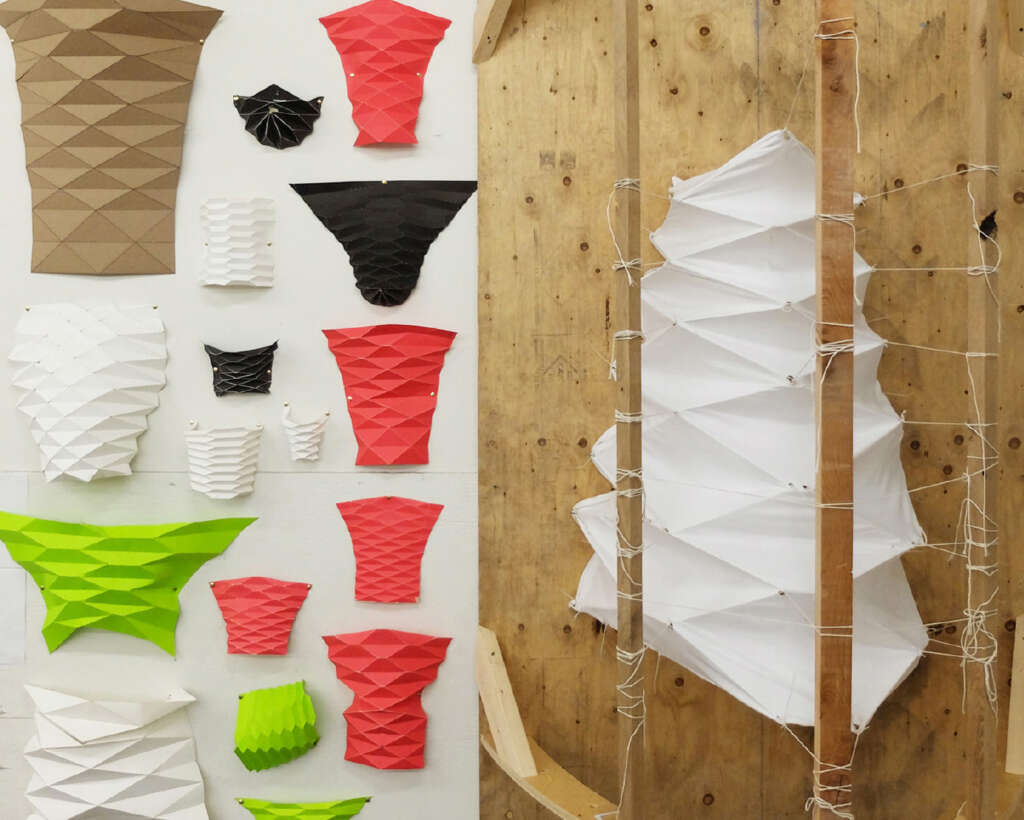
to credit: Lancelot Coar / FAUM
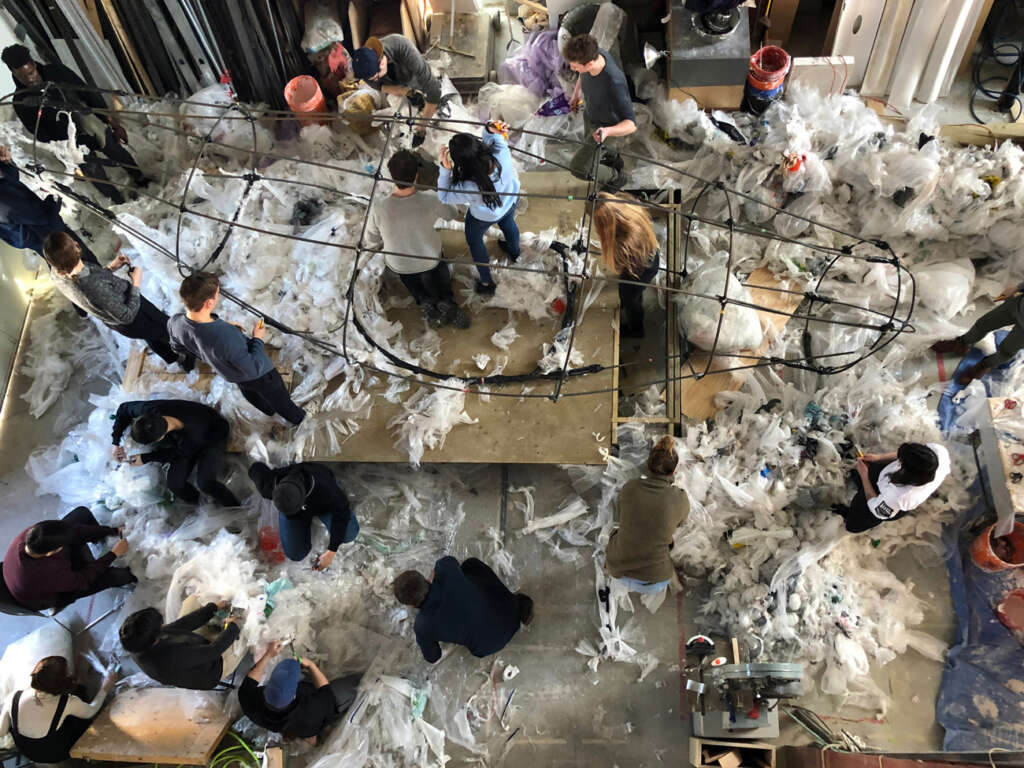
Purchasing: This book can be bought from favourite bookstores, or directly from distributor UBC Press.




